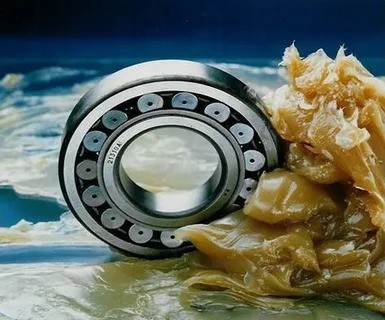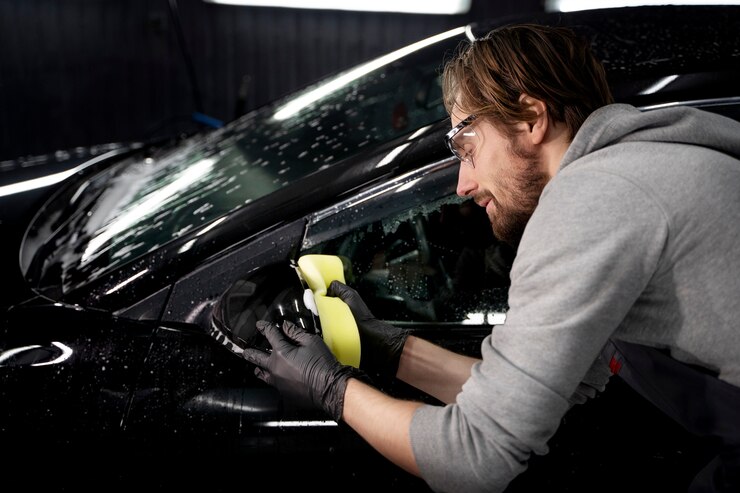Without gears, machines and mechanical systems cannot work correctly. Gears transmit power and motion, and their flexibility in function has ensured their wide application in automobiles, manufacturing, and construction industries. Proper lubrication is indispensable to maintaining gear efficiency. Of all lubricants, breaker greases containing special additives have traditionally been vital in protecting gears and increasing their life.
Breaker grease additives improve lubricant performance. This leads to better protection against wear, friction, and extreme conditions. Gears would degenerate faster without them, and mechanical failures would occur more often. So, it is easy to understand just how vital breaker grease additives are and why industries must implement them for proper gear lubrication practices to be extended over a longer machinery life.
Breaker Grease Function in Lubrication
Breaker grease, also known as block grease, is a type of lubricant that can reduce friction and wear in systems under heavy mechanical loads. It is used in heavy machinery, mining equipment, and industrial gear systems. Unlike regular lubricants, breaker greases are intended to withstand various stresses, including high pressure, fluctuating temperature variations, and possible contamination.
The presence of additives makes breaker grease effective. These chemical compounds enhance the grease’s resistance to heat, moisture, and heavy loads, protecting gears. Lubrication would break down quickly without these additives, increasing gear wear and causing mechanical damage.
Reducing Friction and Wear
The first and foremost purpose of breaker grease additives is to reduce friction between moving gear surfaces. Gears are constantly in motion, rubbing against each other under high pressure. If not properly lubricated, friction can cause excessive wear, which may lead to gear failure.
The breaker grease additives create a protective film on gear surfaces, reducing direct metal-to-metal contact. This, in turn, reduces friction to prevent premature wear and ensure smooth operation. Less power wasted through resistance between gears also reduces energy consumption. Wear reduction means the additives increase gear life and reduce the need for replacements and maintenance. These factors lower costs and improve the reliability of industrial machines.
Protection in Extreme Conditions
Most equipment works under extreme conditions, and conventional lubricants break down. High temperatures, heavy loads, and exposure to dust, water, or chemicals can rupture lubrication, making it less effective. Breaker greases are, therefore, designed to deal with such extremes. They improve the grease’s temperature stability, preventing breakdowns due to heat. Other properties include a higher load-carrying capability, which may help the grease resist breakdown under excessive pressure. These additives allow the grease to retain its viscosity even at low temperatures, so it does not thicken much, reducing lubricating efficiency. This makes breaker grease suitable for use in different climates and operational conditions.
Prevention of Corrosion and Oxidation
Gears are exposed to moisture and contaminants, which cause corrosion. Rust and oxidation weaken the metal surfaces, and the gears degrade with time. If not checked, corrosion can lead to mechanical failure, costly repairs, and downtime in industrial operations. Breaker grease additives contain anti-corrosion compounds that form a protective barrier on gear surfaces. This barrier prevents moisture from reaching the metal surface, thus avoiding rust formation.
In breaker grease, the oxidation inhibitors reduce the speed of the chemical reactions that break down the lubricants. This increases the grease’s lifespan because it takes longer to be fully depleted while remaining in good working condition. The inhibitors also inhibit corrosion and oxidation, thereby maintaining the strength and functionality of the gears.
Improved Adhesion and Sealing Abilities
This is one of the most essential benefits of breaker grease additives: improving adhesion. Grease needs to stay put to continue lubricating, mainly in high-speed gear systems. Otherwise, if it’s displaced, then the gears may run dry, which results in wear and overheating. Some of the additives in breaker grease serve to improve its adhesive properties, such that it sticks well to the gear surface even under extreme pressures. In this way, lubrication stays where it’s needed continuously for protection.
Apart from adhesion, breaker grease additives also improve sealing properties. These prevent the entry of dust, dirt, and water into the lubrication system and reduce the possibility of contamination. Clean lubrication leads to better performance along with reduced probability of mechanical failure.
Noise and Vibration Reduction
Heavy machinery and industrial systems may cause much noise and vibration when gears work. Too much noise, apart from indicating wear, also means discomfort in the workplace and less efficient machines.
Breaker grease additives reduce noise by cushioning between moving gear surfaces. They smooth the gears’ motion and reduce vibrations, resulting in quieter and more stable operation. Lower noise levels also indicate that the gears run efficiently, minimizing stress on the system and enhancing the machine’s general performance.
Improved Efficiency and Performance
Running gears in a way that produces minimal friction, wear, and noise can only imply a better whole system. Proper lubrication courtesy of breaker grease additives ensures that gears will operate with the most minimal resistance possible and, hence, have a low energy consumption.
In industrial applications, improved efficiency translates to cost savings. Machines require less energy to function, lowering operational costs. This reduces breakdowns and keeps businesses productive. Well-lubricated gears also improve machine performance by facilitating consistent speed and power transmission. This becomes vital in automotive manufacturing, mining, and heavy machinery industries, where performance cannot be compromised.
Choosing the Right Breaker Grease Additives
Not all breaker greases contain the same additives. In selecting the additive, one must consider the type of gear, the operating conditions, and the particular industry’s requirements. Some of the common types of additives in breaker grease are:
- Extreme-pressure (EP) Additives protect gears running under heavy loads. They form a protective layer that prevents surface damage when pressure peaks.
- Anti-wear additives help reduce damage to the gear surface. They minimize wear and tear, which extends gear life.
- Corrosion inhibitors prevent gear corrosion through oxidation and rust, keeping the gear in good health, even in humid or wet situations.
- Adhesion enhancers help prevent grease displacement and ensure continuous lubrication.
A specific combination of additives in breaker grease ensures that the demands of particular applications are met: maximal protection and efficiency.










